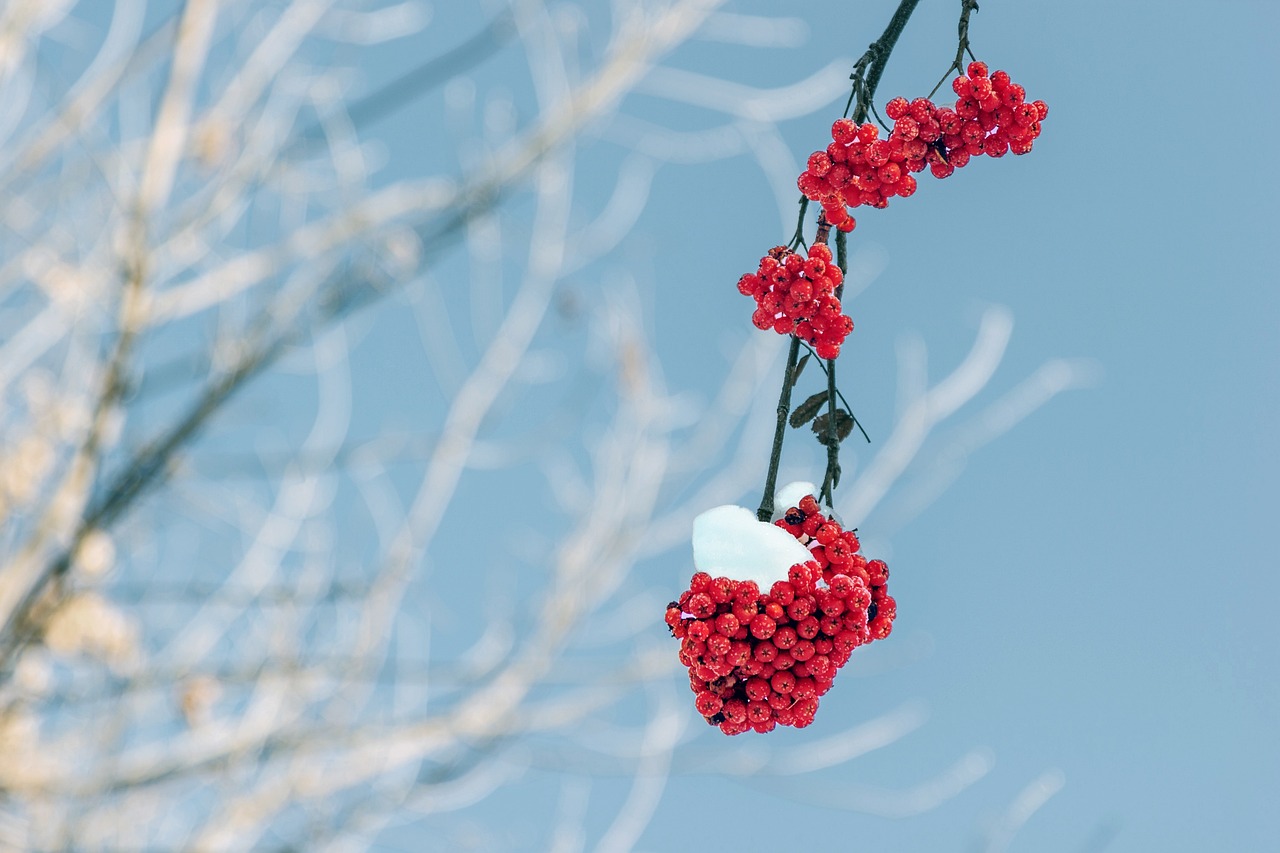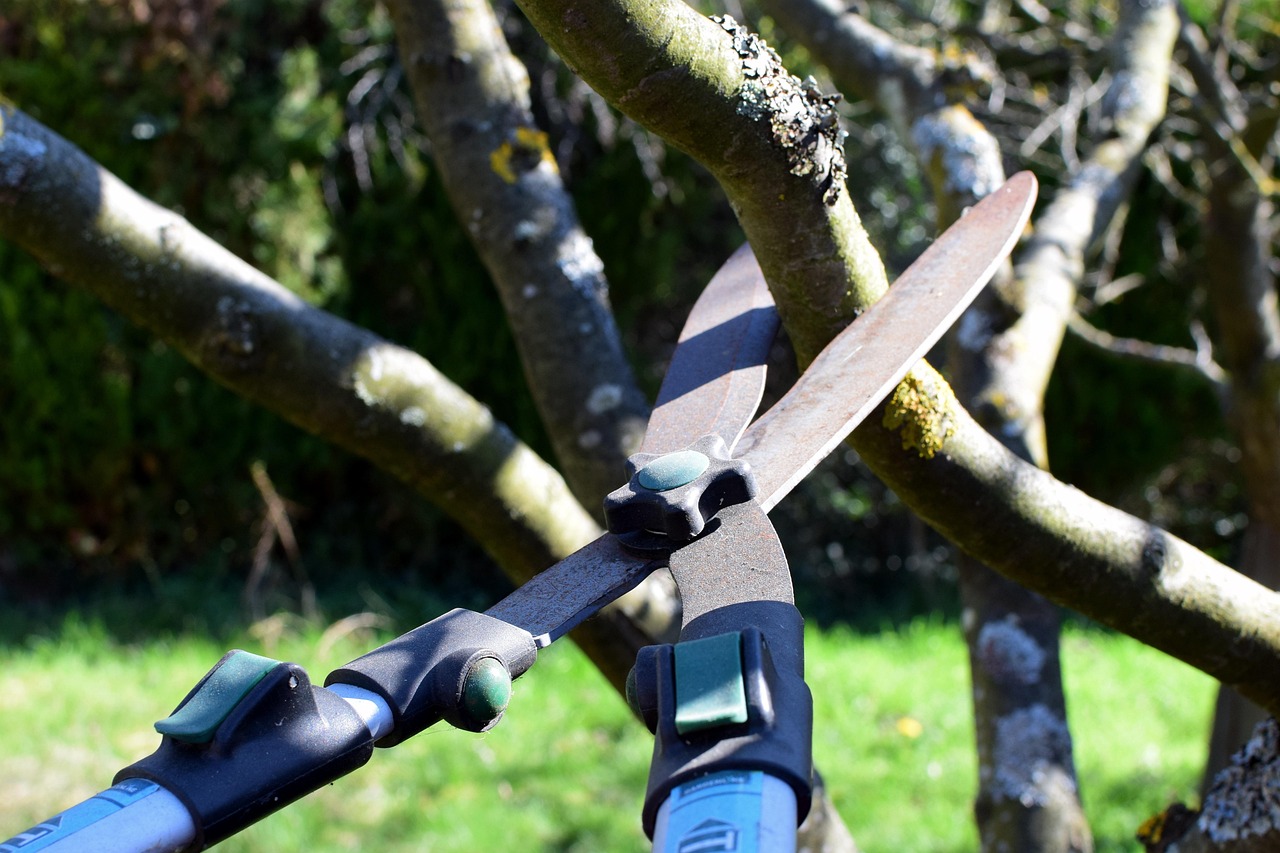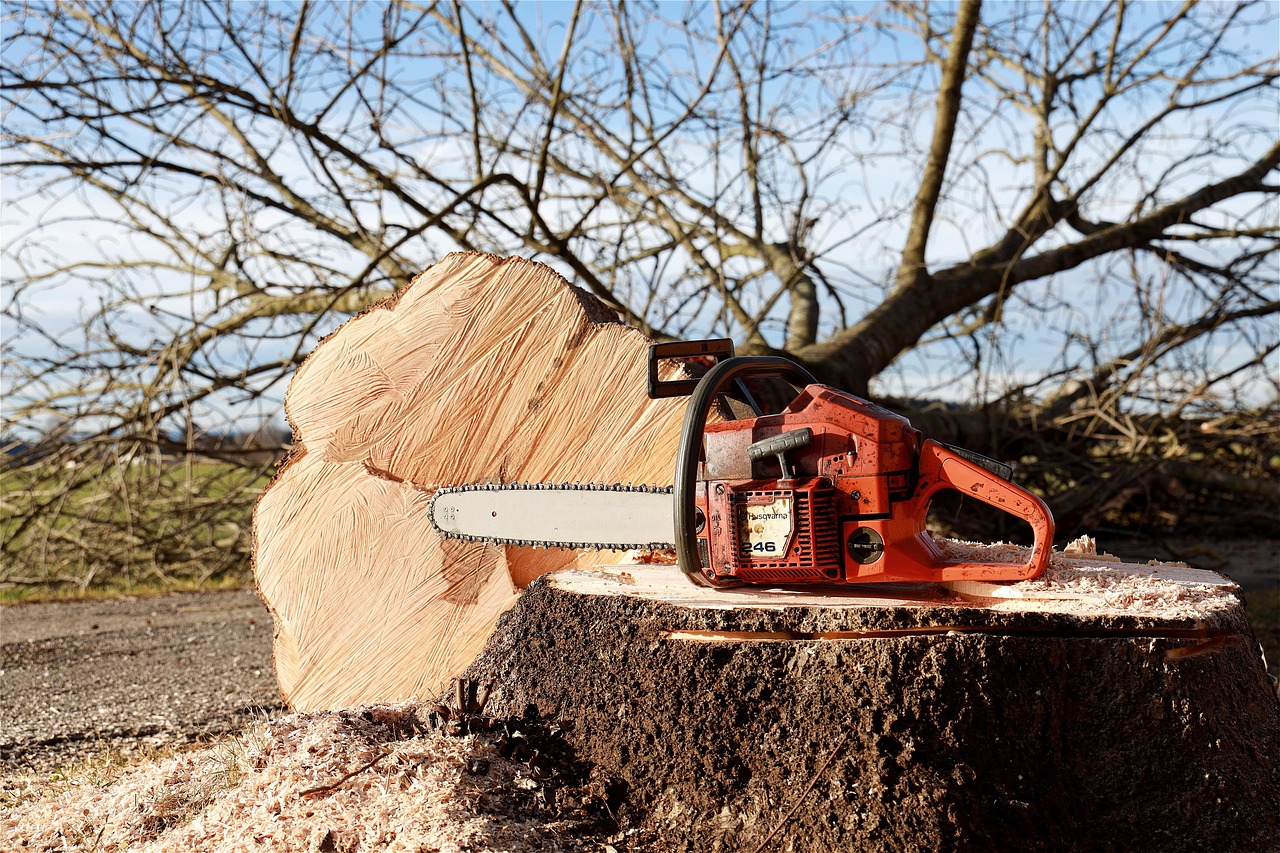To promote healthier growth in a rowan tree, proper pruning is essential. Key steps include assessing the tree’s structure, removing dead or diseased branches, thinning out crowded areas, and shaping the tree to enhance sunlight penetration and air circulation.
The rowan tree, also known as the mountain ash, is renowned for its beauty and resilience. It is native to Europe and parts of Asia, often celebrated for its stunning clusters of white flowers and bright orange berries. Pruning is a critical aspect of maintaining the health and vitality of this tree. Proper pruning not only enhances its aesthetic appeal but also encourages vigorous growth, prevents disease, and promotes better fruit production.

Understanding the best time to prune is vital for rowan trees. The ideal period for pruning is during late winter or early spring when the tree is still dormant. This timing minimizes stress on the tree and reduces the risk of disease infection. However, if you notice any dead or diseased branches, these should be addressed immediately, regardless of the season.
Key Benefits of Pruning Rowan Trees
Pruning offers numerous benefits that contribute to the overall health and longevity of rowan trees. Some of the most important advantages include:
- Improved Air Circulation: Thinning out dense areas allows air to circulate freely, reducing the risk of fungal infections.
- Enhanced Sunlight Exposure: Properly managed branches allow sunlight to reach all parts of the tree, promoting even growth.
- Removal of Dead or Diseased Wood: Eliminating unhealthy branches helps prevent the spread of disease and pests.
- Better Shape and Structure: Shaping the tree creates a more aesthetically pleasing appearance and encourages healthy growth patterns.
Before embarking on the pruning process, it is crucial to assess the tree’s structure. Take time to examine the overall shape and health of the tree. Look for any dead branches, crossing limbs, or areas where growth appears overly dense. This evaluation will guide your pruning decisions.

Essential Tools for Pruning
Having the right tools is essential for effective pruning. Here are some key tools you will need:
- Hand Pruners: Ideal for small branches up to ¾ inch in diameter.
- Loppers: Useful for larger branches, typically up to 1-2 inches in diameter.
- Saw: A pruning saw is necessary for cutting thicker branches safely.
- Gloves: Protect your hands from cuts and scratches while working.
- Ladder: Use a sturdy ladder for reaching higher branches safely.
Steps for Pruning Rowan Trees
Follow these steps for effective pruning of your rowan tree:
- Assess the Tree: Start by examining your rowan tree closely. Identify areas that require attention, such as dead wood or overcrowded branches.
- Remove Dead or Diseased Branches: Cut away any branches that are obviously dead or show signs of disease. Make clean cuts just above a healthy bud or branch junction.
- Thin Crowded Areas: Identify crowded sections where branches cross each other. Remove selected branches to enhance air flow and allow sunlight to penetrate.
- Shape the Tree: Carefully trim back long or unruly branches to maintain an attractive shape. Aim for a balanced appearance that supports healthy growth.
- Clean Up: After pruning, gather all cuttings and dispose of them properly to prevent disease spread. Consider composting healthy clippings.
Caring for your rowan tree through proper pruning not only enhances its health but also improves its beauty. Regular maintenance will ensure your tree thrives for many years to come. Enjoy watching your rowan tree flourish as it develops into a stunning centerpiece in your garden or landscape.

Understanding Rowan Tree Growth Patterns
To effectively prune a rowan tree, it is important to understand its growth patterns. Rowan trees typically exhibit a strong vertical growth habit, with a tendency to produce numerous lateral branches. This growth pattern can lead to overcrowding if not properly managed.
Rowan trees can grow quite large, reaching heights of 15 to 30 feet, depending on the species and growing conditions. They thrive in well-drained soil and prefer full sun but can tolerate partial shade. Recognizing these traits allows for more informed pruning decisions that promote healthier growth.
Growth Stages of Rowan Trees
Rowan trees go through various growth stages, each requiring different care and pruning techniques. Understanding these stages helps in optimizing pruning efforts:

- Young Stage (0-5 years): In this stage, focus on developing a strong central leader and a balanced branch structure. Light pruning may be necessary to shape the tree.
- Mature Stage (5-15 years): At this point, the tree establishes its form. Regular pruning is essential to remove dead or weak branches and encourage healthy growth.
- Declining Stage (15+ years): Older trees may require more intensive care. Pruning should emphasize removing diseased wood and improving air circulation to sustain health.
Each stage has unique characteristics that influence how and when to prune your rowan tree. Properly adapting your pruning techniques to these stages can significantly enhance the tree’s vitality.
Identifying Common Pests and Diseases
Rowan trees, like all plants, are susceptible to various pests and diseases. Awareness of these issues helps in making effective pruning decisions. Here are some common threats:
| Pest/Disease | Symptoms | Pruning Action |
|---|---|---|
| Rowan Leaf Blight | Browning or blackening of leaves, premature leaf drop. | Remove affected leaves and branches; ensure good air circulation. |
| Powdery Mildew | White powdery spots on leaves. | Cut back infested branches; improve light exposure. |
| Aphids | Sticky residue on leaves, curling leaves. | Prune heavily infested branches; consider organic insecticides. |
| Fireblight | Browning and wilting of blossoms; blackened twigs. | Remove infected branches immediately; disinfect tools afterward. |
By keeping an eye out for these signs, you can take proactive measures during your pruning sessions. This will help maintain a healthy rowan tree and prevent the spread of any potential issues.
The Importance of Timing in Pruning
The timing of your pruning efforts can greatly affect the overall health of your rowan tree. Here are some optimal times for different pruning activities:
- Late Winter/Early Spring: The best time for general pruning is just before new growth begins. This ensures minimal stress for the tree.
- Summer: Light pruning during the summer months can help manage growth and remove any unwanted branches while promoting air circulation.
- Post-Bloom: After flowering, consider removing any spent blossoms or damaged branches to encourage new growth for the following season.
Pruning at the right time not only aids in achieving desired shapes but also allows the tree to recover quickly from the cuts made. This ensures that the rowan tree remains robust and healthy throughout its life cycle.
Best Practices for Pruning Techniques
When pruning your rowan tree, employing the correct techniques is essential for minimizing damage and promoting healthy growth. Here are some best practices:
- Make Clean Cuts: Always use sharp tools to make clean cuts. Ragged edges can lead to infections.
- Aim for Angled Cuts: Cut at a slight angle just above a bud to promote new growth and prevent water accumulation.
- Do Not Over-Prune: Avoid removing more than one-third of the tree’s foliage in one season. This can stress the tree and hinder growth.
- Prioritize Safety: If working with taller trees, ensure you use ladders safely or consider hiring professionals for higher pruning tasks.
Following these best practices will help ensure that your pruning efforts contribute positively to the health and appearance of your rowan tree, paving the way for beautiful blooms and abundant fruit in the seasons ahead.
Post-Pruning Care for Rowan Trees
After pruning your rowan tree, it is essential to provide the right care to ensure it recovers well and thrives. Proper post-pruning care can enhance the benefits of your pruning efforts and support the tree’s health as it enters a new growth phase.
Watering Practices
Watering is a critical aspect of post-pruning care. The tree may experience stress after pruning, which can affect its water needs. Here are some guidelines for effective watering:
- Deep Watering: Ensure that you water deeply but infrequently. This encourages deep root growth and resilience.
- Monitor Soil Moisture: Check the soil moisture regularly, particularly during dry spells. The soil should be moist but not waterlogged.
- Avoid Overwatering: Excess water can lead to root rot. Ensure proper drainage in the area around the tree.
Nutrient Management
Providing adequate nutrients is crucial for recovery after pruning. Here are some ways to manage nutrients effectively:
- Fertilization: Apply a balanced fertilizer in early spring, following the manufacturer’s instructions. This will support new growth.
- Organic Matter: Incorporate compost or well-rotted manure into the soil around the tree to enhance nutrient availability.
- Avoid High Nitrogen Fertilizers: Use fertilizers with moderate nitrogen levels to prevent excessive foliage growth at the expense of fruit production.
Common Mistakes to Avoid When Pruning
Even experienced gardeners can make mistakes when pruning rowan trees. Being aware of common pitfalls will help you avoid them:
- Ignoring Tree Structure: Failing to consider the natural shape of the tree can lead to an unbalanced appearance and hinder healthy growth.
- Pruning Too Late: Pruning too late in the season can expose the tree to infection and reduce its ability to recover before winter.
- Inadequate Tools: Using dull or incorrect tools can damage branches and lead to poor healing.
- Neglecting Cleanliness: Not cleaning tools between cuts can transfer diseases from one branch to another.
The Role of Mulching
Mulching plays a vital role in maintaining soil health and moisture retention around your rowan tree. Here’s how to effectively apply mulch:
- Choose Organic Mulch: Use organic materials like wood chips, straw, or shredded bark, which improve soil structure as they decompose.
- Apply a Thick Layer: Spread a 2- to 4-inch layer of mulch around the base of the tree, keeping it away from the trunk to prevent rot.
- Refresh Annually: Replenish mulch annually to maintain its effectiveness and suppress weeds.
Monitoring the Health of Your Rowan Tree
Regular monitoring of your rowan tree’s health after pruning is essential. Here are some key signs to watch for:
- New Growth: Look for signs of new shoots and leaves, indicating that your tree is recovering well.
- Pest Activity: Keep an eye out for pests such as aphids or scale insects that may appear after pruning.
- Disease Symptoms: Watch for unusual discoloration on leaves or branches, which could indicate disease.
Seasonal Considerations for Pruning and Care
The changing seasons can significantly impact your rowan tree’s care requirements. Here’s how to adjust your approach throughout the year:
| Season | Activities | Cautions |
|---|---|---|
| Spring | Prune before new growth; apply fertilizer. | Avoid heavy pruning after buds start swelling. |
| Summer | Light pruning; monitor for pests. | Avoid extensive cuts during hot weather. |
| Fall | Prepare for winter; add mulch. | Avoid late-season pruning that could stress the tree. |
| winter | Plan next year’s pruning; check for damage. | Avoid working on frozen branches to prevent breakage. |
Caring for your rowan tree requires ongoing attention and adaptation to its needs throughout the seasons. By applying these practices and insights, you will foster a thriving environment for your rowan tree to flourish, ensuring it remains a valuable asset in your landscape for years to come.
In addition to the pruning and care techniques discussed, understanding the broader ecological context of your rowan tree is vital. This tree not only serves as a beautiful addition to your garden but also provides valuable benefits to local wildlife and the environment. Rowan trees attract various pollinators, including bees and butterflies, which are essential for maintaining biodiversity.
Furthermore, the berries produced by rowan trees are a food source for birds and other wildlife. By cultivating a healthy rowan tree, you contribute to a thriving ecosystem. This interconnectedness highlights the importance of proper care and maintenance practices, which can have ripple effects beyond your garden.
Enhancing the Landscape with Rowan Trees
Rowan trees can significantly enhance your landscape design. Their vibrant flowers in spring and colorful berries in autumn add visual interest throughout the seasons. Here are some ideas for incorporating rowan trees into your garden:
- As a Focal Point: Plant a rowan tree as a central feature in your garden to draw attention and create a stunning visual impact.
- In Mixed Borders: Combine rowan trees with other flowering plants and shrubs to create a diverse and attractive garden space.
- For Wildlife Gardens: Include rowan trees in wildlife-friendly gardens to provide habitat and food for various species.
- Shade Trees: Position rowan trees to provide shade in outdoor seating areas, enhancing comfort during hot summer days.
With thoughtful placement, rowan trees can become integral components of your landscape, enriching both aesthetics and biodiversity.
Long-Term Maintenance Strategies
To ensure your rowan tree remains healthy for years to come, consider implementing long-term maintenance strategies. These strategies include:
- Regular Inspections: Conduct routine inspections of your tree for signs of pests, diseases, or structural issues. Catching problems early is crucial for effective management.
- Seasonal Care Routines: Develop seasonal care routines that include pruning, watering, mulching, and fertilizing based on the specific needs of your rowan tree.
- Soil Health Management: Monitor soil health regularly and amend it as necessary to ensure your tree receives adequate nutrients throughout its life cycle.
- Education and Research: Stay informed about best practices for rowan tree care by attending workshops or reading up-to-date resources. Knowledge is key to successful tree management.
By committing to these long-term strategies, you will not only enhance the health of your rowan tree but also enjoy its beauty for many years.
Conclusion
Pruning a rowan tree is an essential practice that promotes healthier growth and enhances its overall beauty. Understanding its growth patterns, recognizing signs of pests and diseases, and providing appropriate post-pruning care are all crucial elements in maintaining this magnificent tree. By following the steps outlined in this article, including effective watering practices, nutrient management, and seasonal considerations, you can ensure that your rowan tree thrives.
Moreover, integrating rowan trees into your landscape contributes positively to the environment by supporting local wildlife and enhancing biodiversity. Through regular maintenance and care, you can create a beautiful and sustainable space that showcases the beauty of the rowan tree while benefiting the ecosystem.
With dedication and care, your rowan tree will flourish as a stunning centerpiece in your garden, providing enjoyment for generations to come. Embrace the journey of nurturing your rowan tree and revel in the rewards it brings to your landscape.
